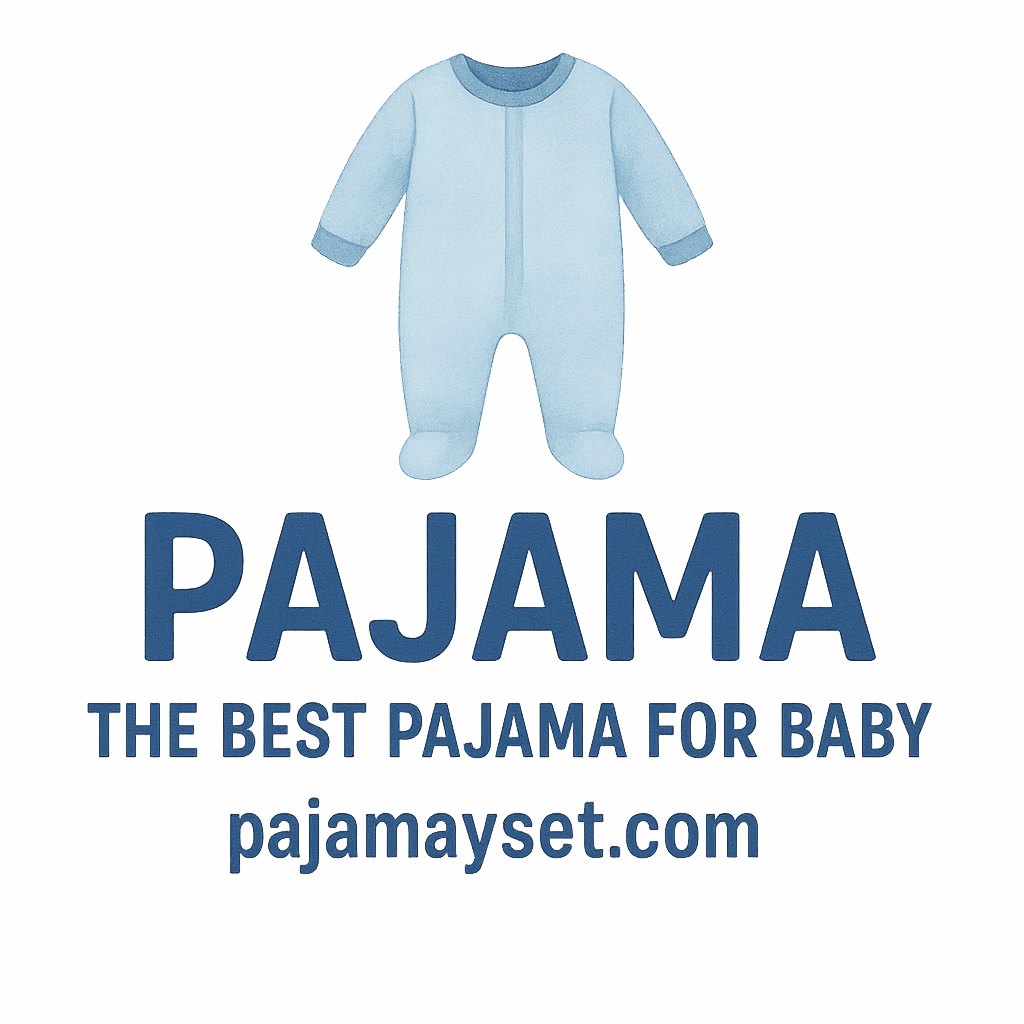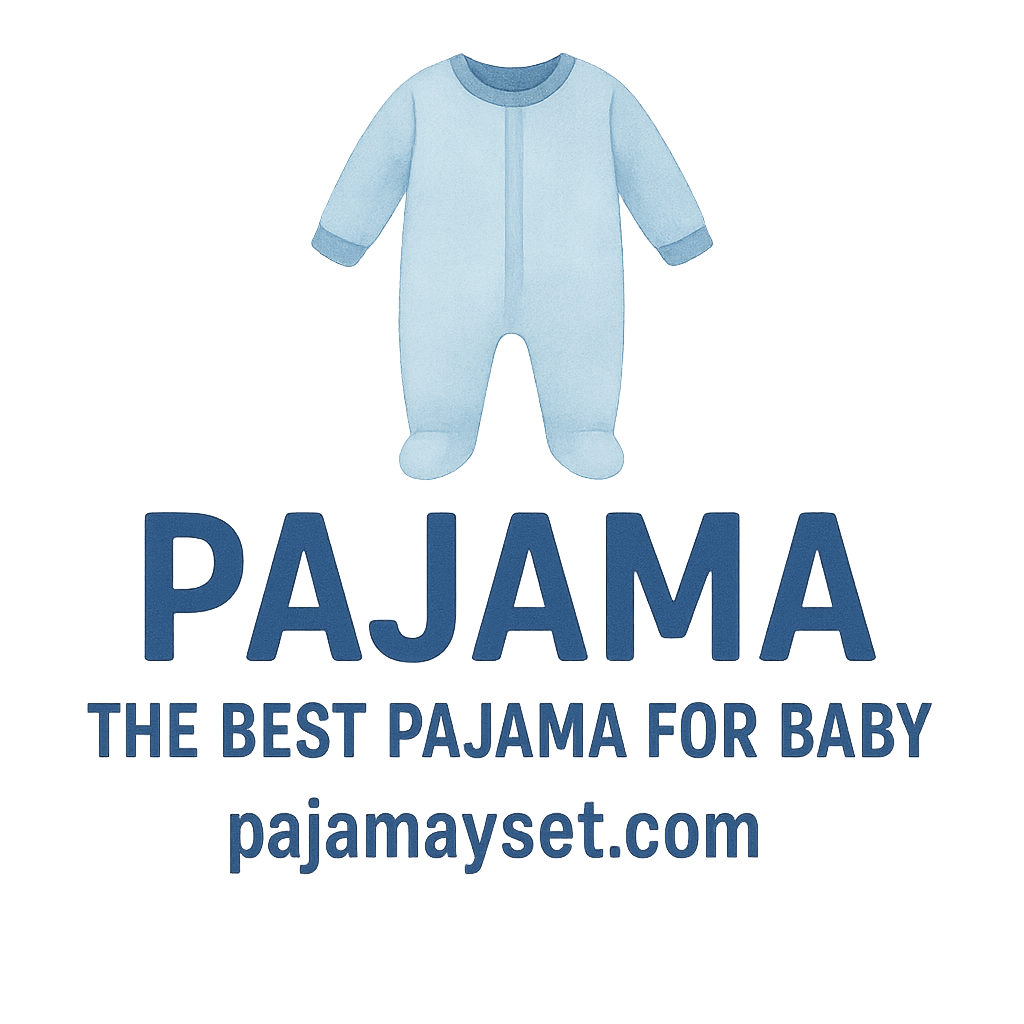Why Fabric Matters for Baby Pajamas
When it comes to baby pajamas, comfort and safety should always be the top priorities. But did you know that the fabric used plays a major role in these factors? Babies have delicate skin, and the right fabric can make a huge difference in ensuring they sleep soundly and comfortably. The choice of fabric influences breathability, softness, temperature regulation, and even skin health.
In this guide, we’ll explore the top 10 fabrics for baby pajamas that offer maximum comfort, breathability, and safety, helping you make the best decision for your little one’s bedtime needs.
What Makes a Fabric Comfortable for Babies?
When selecting fabrics for baby pajamas, comfort is the first thing that comes to mind. But what makes a fabric comfortable for babies? Several factors contribute to this:
- Softness: Babies’ skin is incredibly sensitive, so the fabric needs to be soft and smooth to prevent irritation.
- Breathability: A breathable fabric ensures that your baby’s body stays at a comfortable temperature, reducing the risk of overheating.
- Hypoallergenic Properties: Fabrics that are gentle and free from harsh chemicals help prevent skin rashes and allergies.
- Moisture-Wicking: Fabrics that pull moisture away from the skin keep babies dry and comfortable throughout the night.
The Science of Breathability
Breathability is a term often used when discussing fabrics, but what does it mean? Essentially, it refers to how well a fabric allows air to flow through it, which helps regulate body temperature. For babies, maintaining a stable body temperature is crucial for restful sleep. Fabrics that trap moisture or heat can cause discomfort, which might result in your baby waking up frequently. So, fabrics with high breathability ensure that your baby stays cool in warmer months and warm in cooler temperatures.
1. Cotton: The Classic Choice for Baby Pajamas
Cotton is the go-to fabric for baby pajamas for a reason. It’s soft, breathable, and hypoallergenic, making it perfect for babies with sensitive skin. Cotton’s natural fibers allow air to circulate, keeping your baby cool in warm weather and warm in cooler conditions.
Cotton Variations and Their Impact
Not all cotton is created equal. There are different types of cotton used in baby pajamas, such as organic cotton, Pima cotton, and Egyptian cotton. Each type has its unique benefits, but they all share common advantages like softness, breathability, and durability. Organic cotton, in particular, is grown without harmful pesticides, making it a safer choice for babies.
2. Bamboo: The Sustainable Fabric
Bamboo fabric is one of the most eco-friendly options for baby pajamas. Not only is it breathable and soft, but it also has natural antimicrobial properties, making it perfect for babies with sensitive skin or those prone to allergies. Bamboo fabric regulates temperature, keeping your baby comfortable in both hot and cold weather.
Benefits of Bamboo for Baby Skin
Bamboo’s moisture-wicking properties help keep your baby dry, preventing sweat from building up during sleep. It’s also naturally hypoallergenic and gentle on the skin, reducing the likelihood of rashes or irritation. For more on baby safety and fabric choices, check out baby safety.
3. Organic Cotton: A Healthier Alternative
While regular cotton is soft, organic cotton is a healthier choice. Grown without pesticides, fertilizers, or other chemicals, organic cotton offers a safer, more eco-friendly option for your baby. Organic cotton fibers are softer and gentler on the skin, making them an ideal choice for sensitive babies.
How Organic Cotton Helps Prevent Allergies
Organic cotton reduces the likelihood of allergies because it’s free from the toxic chemicals found in conventional cotton farming. By choosing organic cotton, you’re providing your baby with a fabric that’s safe and gentle on their delicate skin.
4. Linen: Light, Soft, and Breathable
Linen is a lightweight, breathable fabric perfect for babies, especially in warmer climates. It’s made from the flax plant and is known for its ability to keep babies cool during hot weather while still providing enough warmth in cooler conditions.
Pros and Cons of Linen Pajamas
While linen is extremely breathable and moisture-wicking, it can wrinkle easily and may not feel as soft as cotton at first. However, over time, linen becomes softer and more comfortable, making it a great option for long-term use. For more information on fabric types and care, visit pajama materials.

5. Merino Wool: Softness and Temperature Regulation
Merino wool is a natural fiber that offers excellent breathability and temperature regulation. It’s lightweight, soft, and ideal for keeping your baby warm without overheating. Merino wool is also naturally moisture-wicking, making it perfect for both cooler weather and babies who tend to sweat.
How Merino Wool Helps Regulate Baby Temperature
Merino wool helps regulate body temperature by trapping warmth without causing overheating. It absorbs moisture from the skin, keeping your baby dry and comfortable throughout the night. If you’re considering temperature regulation for baby sleepwear, look into breathable fabrics that also offer comfort.
6. Fleece: Cozy, Soft, and Insulating
Fleece is a synthetic fabric that’s warm, soft, and perfect for colder months. It’s lightweight yet provides excellent insulation, making it a popular choice for baby pajamas during the winter season.
When to Use Fleece for Baby Pajamas
Fleece is great for winter or cooler months but may be too warm for warmer seasons. It’s perfect for babies who need an extra layer of warmth but should be avoided in warmer climates to prevent overheating. For more seasonal recommendations, visit seasons and weather.
7. Tencel (Lyocell): The Eco-Friendly Option
Tencel is a sustainable fabric made from wood pulp, and it’s known for being eco-friendly, soft, and breathable. It’s a great option for baby pajamas, especially for babies with sensitive skin.
How Tencel Contributes to Baby Skin Health
Tencel is gentle on the skin, moisture-wicking, and regulates temperature, ensuring your baby stays comfortable all night long. It’s also biodegradable, making it a more environmentally friendly option than many other fabrics. For eco-friendly baby fabric options, check out fabric materials.
8. Silk: Luxuriously Soft and Lightweight
Silk is a luxurious fabric that’s incredibly soft and lightweight. It’s hypoallergenic and perfect for babies with sensitive skin. Silk helps regulate body temperature, keeping your baby warm in the winter and cool in the summer.
The Advantages of Silk for Baby Sleepwear
Silk is known for its luxurious feel and its ability to help babies sleep comfortably. It’s a natural temperature regulator, ensuring that your baby’s body stays at the optimal temperature throughout the night. If you want a more luxurious feel for your baby’s sleepwear, visit style and design.
9. Jersey Knit: Stretchy and Soft
Jersey knit is a stretchy, soft fabric that’s perfect for active babies. It’s made from cotton or synthetic fibers and is often used in baby pajamas due to its comfort and flexibility.
The Benefits of Jersey Knit for Baby Pajamas
Jersey knit fabric is soft, stretchy, and provides ease of movement, making it ideal for babies who are learning to roll over or move around in their sleep. For more information on comfort, explore our guide to comfortable pajamas.
10. Polyester Blends: Durability Meets Comfort
Polyester blends are often used in baby pajamas due to their durability, softness, and affordability. While not as breathable as natural fabrics, polyester blends can still offer comfort and flexibility for your baby.
Pros and Cons of Polyester Blends
Polyester blends are durable, easy to care for, and resistant to wrinkles. However, they may not be as breathable as cotton or bamboo, making them better suited for colder weather. For a deeper look into fabric blends, visit fabric materials.
Conclusion
Choosing the right fabric for your baby’s pajamas is crucial for ensuring comfort, breathability, and skin health. Fabrics like cotton, bamboo, organic cotton, and merino wool are all excellent choices that provide the softness, breathability, and hypoallergenic properties babies need for a peaceful night’s sleep.
When shopping for baby pajamas, remember to consider the season, temperature, and your baby’s skin sensitivity. Ultimately, the best fabric is one that balances comfort, breathability, and safety. For more information on fabric types and baby sleepwear, explore buying reviews.
FAQs
- What is the best fabric for sensitive baby skin?
Organic cotton and bamboo are excellent choices for babies with sensitive skin due to their soft, hypoallergenic properties. - Is merino wool good for baby pajamas?
Yes, merino wool is perfect for babies as it helps regulate temperature and keeps your baby comfortable. - Can I use fleece for baby pajamas in the summer?
No, fleece is best for winter or cooler weather, as it can cause your baby to overheat in warmer months. - Is bamboo fabric safe for babies?
Bamboo fabric is safe and hypoallergenic, making it a great choice for baby sleepwear. - What fabric is most breathable for baby pajamas?
Cotton and linen are two of the most breathable fabrics for baby pajamas. - Is silk safe for baby pajamas?
Yes, silk is a luxurious and safe option for baby pajamas, providing natural temperature regulation and softness. - Can I use polyester blends for baby pajamas?
While polyester blends are durable and easy to care for, they may not be as breathable as natural fabrics like cotton or bamboo.


